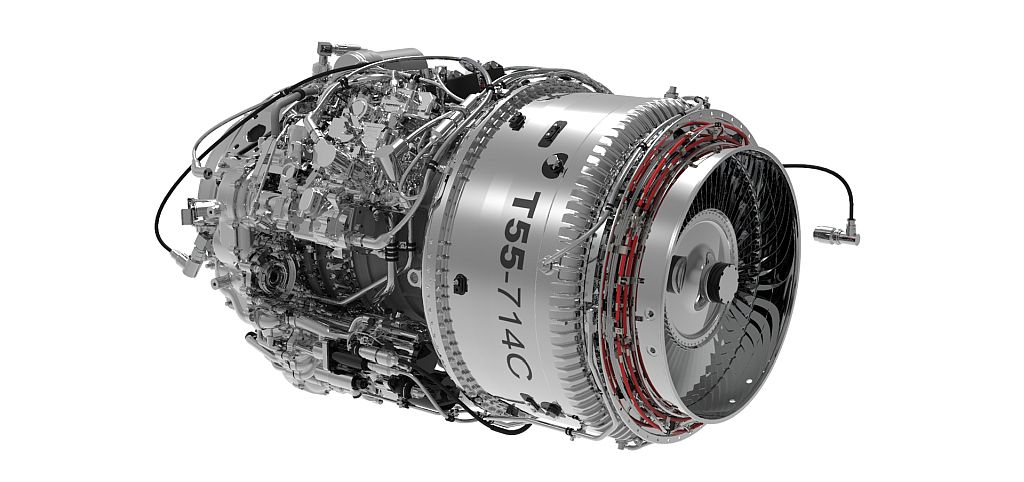A power of good!

Honeywell Aerospace’s senior director of military turboshaft engines, T.J. Pope looks at how the Chinook’s T55 engine has been made better than ever.
A helicopter as iconic as the CH-47 Chinook deserves engines that are as powerful and reliable as the legendary heavy-lift champion itself. That’s why generations of Honeywell engineers have made it their mission to continuously improve the helicopter’s T55 engines, a pair of which have been powering every Chinook since its first flight in 1961.
Honeywell has produced more than 6,000 engines in the T55 family since the first one rolled off the assembly line more than 60 years ago. These remarkable engines have logged about 12 million hours of reliable operation, most spent helping military Chinook operators achieve their heavy-lift missions, which can range from moving cargo and equipment on the battlefield, to transporting troops, to delivering critical supplies on humanitarian missions.
The latest evolution is the T55-714C, which represents an enormous leap forward for the T55 engine family and can be installed as a new-production engine or as a modification to the T55-714A engines, which fly most of the world’s fleet of more than 900 Chinooks. The T55-714C required immense expertise and knowledge in order to understand the future demands of the model. Even after 60 years in operation the Chinook is still one of the military’s most highly regarded helicopters in the fleet and just last month the UK placed an order for another 14 Chinooks. However, alongside its continued demand are the increased requirements on performance - operators need increased power, more range, and optimised maintainability.
Delivering the specific demands for the latest T55 engine required a spotlight on some key areas:
More power and payload: The Chinook is known for its robust strength and ability to transport significant payloads. The new T55-714C variant achieves a 22% increase in horsepower, delivering the power the Chinook needs to perform its heavy-lift mission for the US Army, UK Royal Air Force, Royal Netherlands Air Force and others. The new engine generates nearly 6,000 shaft-horsepower at sea level compared to 4,777 for the 714A version and just 2,050 for the original T55. This additional horsepower means the Chinook can carry a 16% heavier payload of up to 21,000lbs.
Achieving greater fuel efficiency: Fuel is one of the biggest costs generated by the Chinook. Not because of the gas itself, but because of the logistics of getting the fuel to where the helicopter needs to be refuelled. Improving fuel efficiency reduces logistics requirements and produces savings in the form of both time and consumption, which made it a critical demand for the latest model. The focus on meeting fuel efficiency goals paid off with an 8% improvement in specific fuel consumption, which means the Chinook can fly further, for a longer duration, or lift more to accomplish its critical missions.
Improving reliability and maintenance: Chinook helicopters need to be ready to perform on the battlefield and under the most challenging conditions imaginable. It’s critical they are tough, rugged, reliable, and easy to maintain, which is exactly what the T55-714C delivers. It achieves a 25% overall improvement in reliability and a 27% reduction in part count, making it easier to service and maintain than previous versions of the engine. Part of this change involved removing a major pain point for maintenance techs by repositioning the hydromechanical assembly (HMA) so that it’s no longer necessary to remove the engine to replace the HMA. In addition, further digitisation of maintenance, such as condition monitoring and maintenance scheduling, has improved ease, speed, and accuracy, ultimately bringing the mean repair time down by 28%, which improves aircraft availability.

Hot and heavy performance
Part of ensuring better performance requires determining how and where the Chinook will most likely be used in the future. Annual usage suggests that these heavy-lift champs are most commonly used in hotter climates at higher altitudes, meaning better high, hot, and heavy performance was a necessity. The T55-714C delivers double the operating range for these types of mission, providing more carrying power when operators need it most. The engine has also been made more sand tolerant, for improved reliability in desert operations.
It’s clear that the T55-714C has been developed as a next-generation version of this proven engine, enhancing capabilities, and extending the service life of one of the most iconic helicopters in the fleet. While T55-714C engines built at the T55 Engine Centre of Excellence in Phoenix will share DNA with the original engine introduced in the 1950s, that’s where the resemblance ends. There have been multiple upgrades over the engine’s lifespan and there’s no question that these have been responsible for retaining the Chinook’s unrivalled position in the military. The enormous strides made in recent years have undoubtedly improved the engine’s performance, reliability, and efficiency, making the latest 714-Charlie version of the T55 the best that’s ever been produced.











